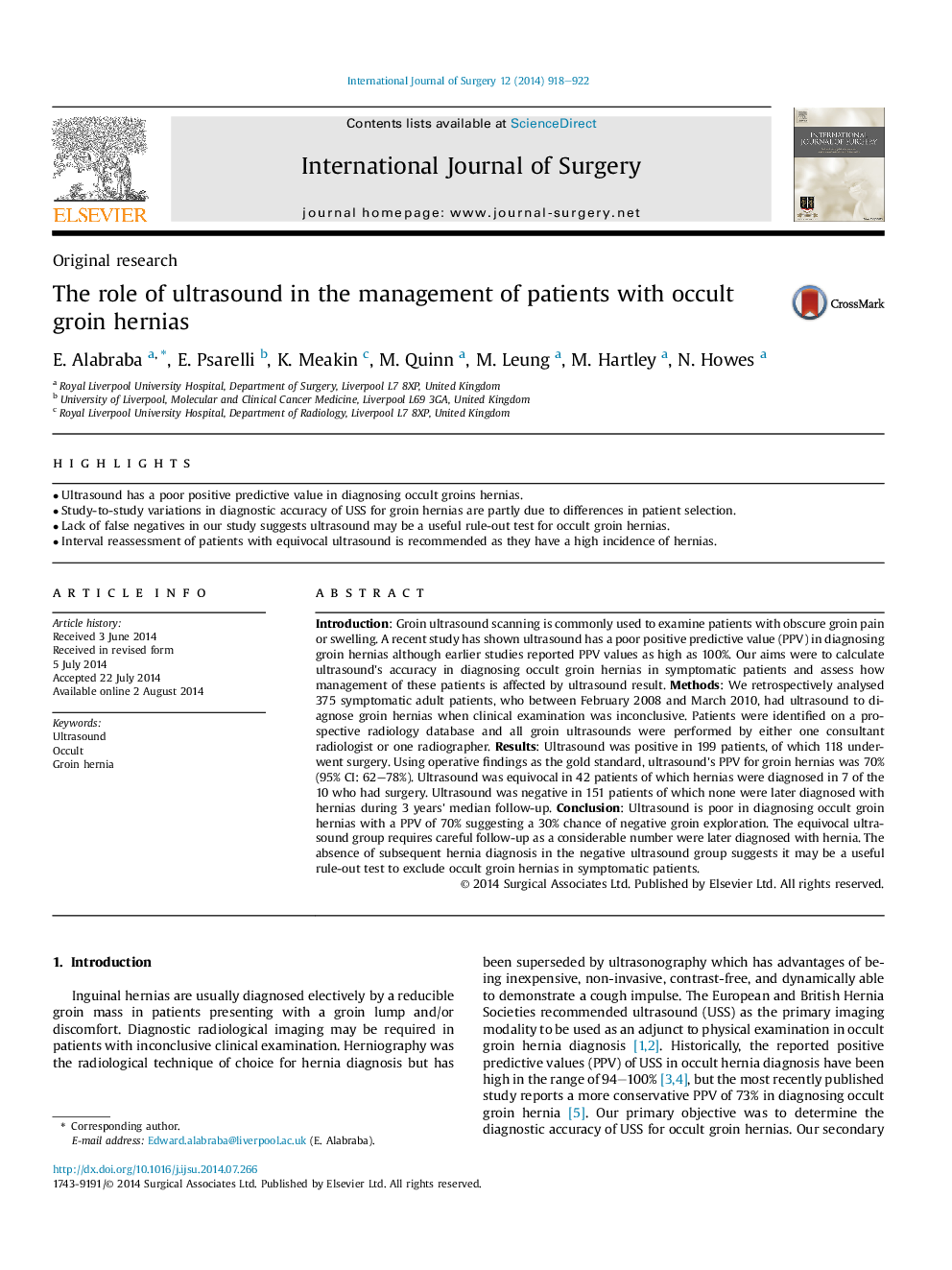| کد مقاله | کد نشریه | سال انتشار | مقاله انگلیسی | نسخه تمام متن |
|---|---|---|---|---|
| 6251710 | 1611986 | 2014 | 5 صفحه PDF | دانلود رایگان |
- Ultrasound has a poor positive predictive value in diagnosing occult groins hernias.
- Study-to-study variations in diagnostic accuracy of USS for groin hernias are partly due to differences in patient selection.
- Lack of false negatives in our study suggests ultrasound may be a useful rule-out test for occult groin hernias.
- Interval reassessment of patients with equivocal ultrasound is recommended as they have a high incidence of hernias.
Introduction: Groin ultrasound scanning is commonly used to examine patients with obscure groin pain or swelling. A recent study has shown ultrasound has a poor positive predictive value (PPV) in diagnosing groin hernias although earlier studies reported PPV values as high as 100%. Our aims were to calculate ultrasound's accuracy in diagnosing occult groin hernias in symptomatic patients and assess how management of these patients is affected by ultrasound result. Methods: We retrospectively analysed 375 symptomatic adult patients, who between February 2008 and March 2010, had ultrasound to diagnose groin hernias when clinical examination was inconclusive. Patients were identified on a prospective radiology database and all groin ultrasounds were performed by either one consultant radiologist or one radiographer. Results: Ultrasound was positive in 199 patients, of which 118 underwent surgery. Using operative findings as the gold standard, ultrasound's PPV for groin hernias was 70% (95% CI: 62-78%). Ultrasound was equivocal in 42 patients of which hernias were diagnosed in 7 of the 10 who had surgery. Ultrasound was negative in 151 patients of which none were later diagnosed with hernias during 3 years' median follow-up. Conclusion: Ultrasound is poor in diagnosing occult groin hernias with a PPV of 70% suggesting a 30% chance of negative groin exploration. The equivocal ultrasound group requires careful follow-up as a considerable number were later diagnosed with hernia. The absence of subsequent hernia diagnosis in the negative ultrasound group suggests it may be a useful rule-out test to exclude occult groin hernias in symptomatic patients.
Journal: International Journal of Surgery - Volume 12, Issue 9, September 2014, Pages 918-922
